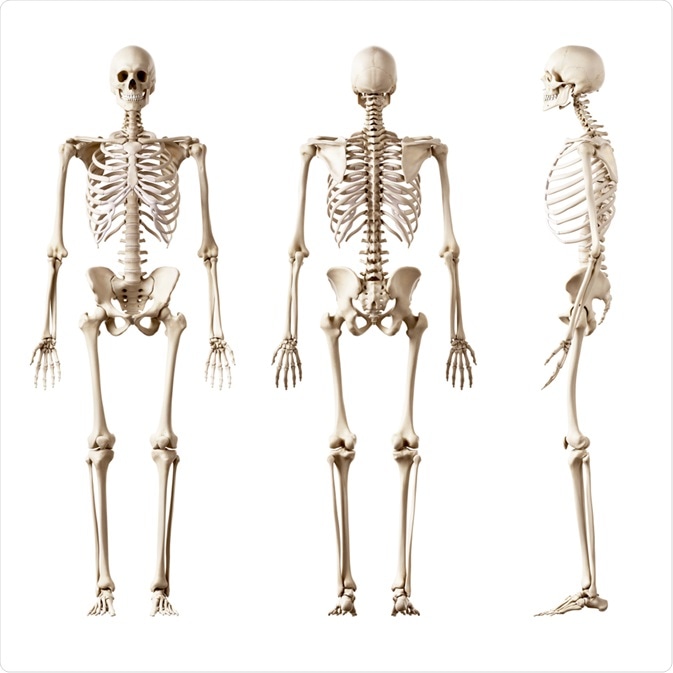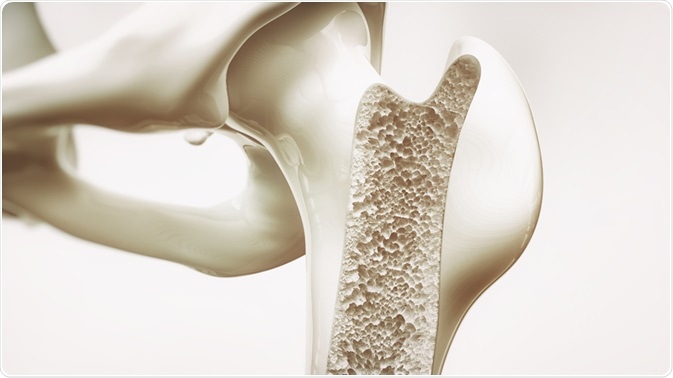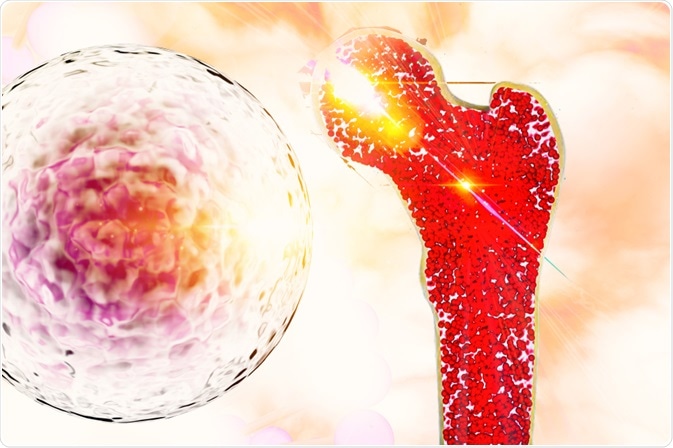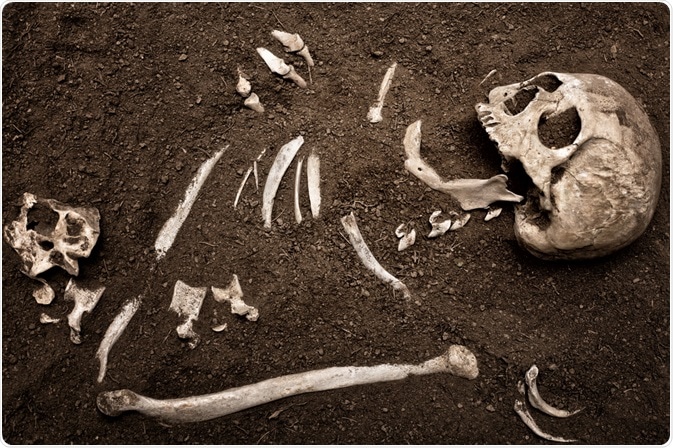Bone proteomics, a study centered on proteins existing in bone materials, have been beneficial for its use in both medicine and forensic science. The role of proteomic studies on protein profiling has provided insights into aging, bone disease, and cancer.

Image Credit: SciePro/Shutterstock.com
Nonetheless, the study has also expanded to the field of forensic science in observing the decomposition of the proteome in bone tissues to calculate the time interval after death.
Bone Marrow Aging
Aging of the bone marrow is linked to the genetic changes occurring in the proteome and within the bone marrow cells. This aging, which affects the functions of bone marrow, may lead to severe illnesses such as leukemia, cancer, and osteoarthritis.
Nevertheless, through sophisticated and advanced technologies, proteomics can reveal a comprehensive set of information on bone marrow aging and the changes made from this aging.
As one ages, the proteome existing in the bone marrow experiences alterations. Through the changes in the bone marrow proteomes, the mechanism of aging can be examined through observing the pattern alterations.
A study shows that the multipotent cells existing in the bone marrow, MSCs, are experiencing changes in the cytoskeleton dynamics. The aging of the bone marrow also shows the reduction in the expression of the antioxidant system member, peroxiredoxin-2.
Though the study has shown the positive results on the study of bone marrow aging, the reproducibility of proteomics and the heterogeneity exist as challenges to the analysis. The reproducibility issue can be improved by better separation and quantitative proteomic instruments to produce more precise and accurate findings.
Osteoporosis
Proteomics can be used to study biomarkers and therapeutic procedures. Studies have shown that the instability between bone formation and resorption plays a role in bone diseases in most cases found.
A common bone disease that has affected postmenopausal women and elderly men is osteoporosis. The metabolic bone disease may be caused by aging, deficiency in calcium as well as estrogen intake when the primary osteoporosis occurs. While secondary osteoporosis is linked to other diseases of hyperparathyroidism, myelomatosis, and glucocorticoid excess.
A proteomic study reveals the different therapeutic targets through profiling isolated proteins in the fatigue and ulna midshafts of rats by LC-MS/MS. A study shows that there is a link between a Chinese herbal medicine called salvia militiorrhiza to osteoporosis.
However, challenges occur for LC-MS/MS techniques in detecting a low amount of proteins in the bone tissues. More advanced technologies with better sensitivity to aid the study of proteomics in bone diseases are needed for efficient biomarkers and therapeutic detection.

Image Credit: Crevis/Shutterstock.com
Bone Cancer
The role of technology advancements in bone proteomic provides promising contributions to cancer. The risk of cancer to its treatment can be studied through the diagnostic markers taken from protein profiling.
Proteomics can determine the status of the disease through observing the changes in the cellular processes from protein expression, interactions between proteins to post-translational modifications.
Aside from identifying the alterations within the protein expression, proteomics can diagnose, monitor, and treat cancer through the search of biomarkers. Analytical techniques can be used to separate the proteins from tissues as well as for the identification of these proteins.
Gel electrophoresis and HPLC are common techniques used by scientists to separate these proteins from complex matrices and mass spectrometry can be utilized for identification.
Biomarkers discovery can provide insights into the tumor progression in a patient through the sensitive and convenient SELDI-TOF MS instrument. The instrument is capable of identifying, characterizing, and sequencing key protein features to indicate various bone diseases.
Biological fluids such as plasma, urine, and blood of prostate cancer, osteochondroma, and breast cancer are profiled to indicate the status of bone disease. The biomarkers discovery is also capable of determining the different stages of the disease in patients.
To ensure that the discoveries can be appropriately used to oversee the needs of patients, better methodology, reproducible sample collection methods, and approved bioinformatic analysis to more patients are needed.

Image Credit: CI Photos/Shutterstock.com
Forensic Science
The study of proteomics applies to bones as the pieces are composed of approximately 70% of the inorganic phase, hydroxyapatite crystals, while 30% are the organic phase made up by proteins (predominantly collagenous proteins). The proteins are vital to the formation of bones and their remodeling, while the hydroxyapatite crystals prevent proteins from degrading.
However, the interactions within the molecules existing in the bones are disrupted from the filtering of proteins from the burial environment. Damages may occur in proteins due to the unstable reaction from the hydrolysis of peptide bonds, leaving little amounts of collagen to be present. The changes in deamidation may provide more specifics into calculating decay for its dependency on time.
The rate of this non-enzymatic hydrolysis occurring in glutamine and asparagine amino acid residues are influenced by external conditions that may reveal the geological age of the bones. Through these biomolecule interactions in bone tissues, the rate at which protein decay may provide efficient time estimates during post-mortem.
News: Certain proteins in bones could help estimate the time of death

Image Credit: gualtiero boffi/Shutterstock.com
References:
- Buckley, M. (2019). ‘Proteomics in the Analysis of Forensic, Archaeological, and Paleontological Bone.’ ACS Symposium Series, pp.125 - 141. doi: 10.1021/pr070056t
- Lee, J., Cho, J. (2014) ‘Proteomics approaches for the studies of bone metabolism.’ BMB Reports, 47(3), pp. 141 – 148. doi: 10.5483/BMBRep.2014.47.3.270
- Procopio, N., Chamberlain, A. and Buckley, M. (2017) ‘Intra- and Interskeletal Proteome Variations in Fresh and Buried Bones.’ Journal of Proteome Research, 16(5), pp. 2016 - 2029. doi: 10.1021/acs.jproteome.6b01070
- Wang, W., Gou, L. and Yang, J. (2010) ‘What can proteomics teach us about bone marrow aging?’ Expert Review of Proteomics, 7(6), pp.799 - 802. doi: 10.1586/epr.10.96
Further Reading
Last Updated: Sep 11, 2020